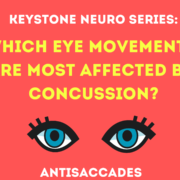Otolith Dysfunction: A Forgotten Cause of Dizziness

This month we have had a couple of dizzy patients who have been getting vestibular rehabilitation for a few months, but have continued to struggle with a sense of imbalance and dysequilibrium.
They initially had a pretty bad vertigo attack from a likely viral infection, but they haven’t felt vertigo since their initial attack. Although they don’t spin anymore, they can’t shake the sense of feeling like they’re tilting or being pulled off balance.😵💫🤢
Vestibular and balance rehabilitation is fantastic at addressing most of these cases, but some cases seem resistant to head shaking and balance training exercises.
What gives???? 🤷🏻♂️🤷🏻♂️🤷🏻♂️
Many patients will have caloric and #BPPV testing done when they see an ENT which tests function of the 𝘀𝗲𝗺𝗶𝗰𝗶𝗿𝗰𝘂𝗹𝗮𝗿 𝗰𝗮𝗻𝗮𝗹𝘀 and 𝘃𝗲𝘀𝘁𝗶𝗯𝘂𝗹𝗮𝗿 𝗻𝗲𝗿𝘃𝗲, but many people don’t get the otolithic organs tested.
Otolith dysfunction can be tested using electrical myographic tests called VEMPs, but are not done commonly.
Another simple way to test it is measuring subjective visual vertical testing.

This test allows us to see if you are perceiving then world on a tilt.
When your otoliths don’t work, your brain doesn’t perceive gravity well, and your eyes may roll the wrong way and cause an abnormal head tilt.

You may not realize the world is crooked because your brain is really good at using context clues to make your world straight. I.e- your brain knows that the horizon is level, so it will reorient your view to make that level.
We can test it by blocking out most of your vision except for a line, and ask you to make it
straight.
If we know the otolith is malfunctioning, we can do different therapies using tilt, specific ear vibration frequencies, or even e-stim to activate the otolith and straighten out your visual vertical.














Leave a Reply
Want to join the discussion?Feel free to contribute!